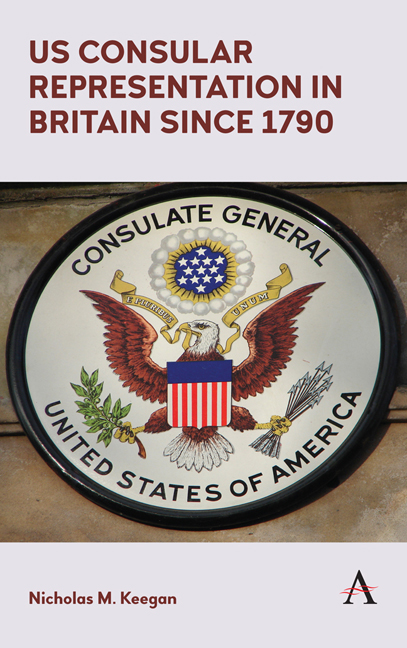Book contents
- Frontmatter
- Dedication
- Contents
- List of Illustrations
- Foreword
- Preface
- Acknowledgements
- Introduction
- PART 1
- PART 2
- PART 3
- Chapter Six Consular Posts and Consular Agencies in Major Cities
- Chapter Seven Belfast
- Chapter Eight Birmingham
- Chapter Nine Bradford
- Chapter Ten Bristol
- Chapter Eleven Cardiff
- Chapter Twelve Dublin
- Chapter Thirteen Dundee
- Chapter Fourteen Dunfermline
- Chapter Fifteen Edinburgh and Leith
- Chapter Sixteen Falmouth
- Chapter Seventeen Liverpool
- Chapter Eighteen London
- Chapter Nineteen Newcastle upon Tyne
- Chapter Twenty Southampton
- Chapter Twenty-One Stoke on Trent
- Chapter Twenty-Two An Evolving, Adaptive Service
- Appendix: Locations and Categories of Consular Offices
- Notes
- Sources
- Bibliography
- Index
Chapter Fourteen - Dunfermline
from PART 3
Published online by Cambridge University Press: 21 June 2018
- Frontmatter
- Dedication
- Contents
- List of Illustrations
- Foreword
- Preface
- Acknowledgements
- Introduction
- PART 1
- PART 2
- PART 3
- Chapter Six Consular Posts and Consular Agencies in Major Cities
- Chapter Seven Belfast
- Chapter Eight Birmingham
- Chapter Nine Bradford
- Chapter Ten Bristol
- Chapter Eleven Cardiff
- Chapter Twelve Dublin
- Chapter Thirteen Dundee
- Chapter Fourteen Dunfermline
- Chapter Fifteen Edinburgh and Leith
- Chapter Sixteen Falmouth
- Chapter Seventeen Liverpool
- Chapter Eighteen London
- Chapter Nineteen Newcastle upon Tyne
- Chapter Twenty Southampton
- Chapter Twenty-One Stoke on Trent
- Chapter Twenty-Two An Evolving, Adaptive Service
- Appendix: Locations and Categories of Consular Offices
- Notes
- Sources
- Bibliography
- Index
Summary
Situated some three miles inland from the Firth of Forth, Dunfermline was for several hundred years the capital of Scotland. The town is also the birthplace of Andrew Carnegie, the famous industrialist and philanthropist.
Manufacturers in Dunfermline had to travel to the Edinburgh consulate to have their invoices certified before they could export their goods to the United States. As is explained in the Edinburgh and Leith consulate history (Chapter 15), a group of Dunfermline manufacturers wrote to Colonel John Robeson, the Edinburgh consul, in February 1871 asking him to have a consular agency established in Dunfermline with John Burn Doig as agent. This would save them making the twice-weekly, 34-mile journey to Edinburgh. (The Forth Railway Bridge, which eventually would considerably shorten their journey, did not open until almost twenty years later.) Robeson wrote to the Department that month supporting the request, adding that more than eight hundred of the previous year's two thousand invoices verified at his consulate had come from Dunfermline. The Department agreed to the proposal and 20-year-old Doig was appointed on 24 March. In 1872, the business of verifying invoices was described by a government inspector as ‘quite large’, and for the three quarters ended 31 March 1872 generated fee income of $1,740. Doig remained as consular agent until 1877 when he was replaced by George H. Scidmore of Ohio who was appointed as vice consul. The following year a further agency was opened in nearby Kirkcaldy headed by Andrew Innes, a local solicitor and notary public.
Dunfermline became a commercial agency in 1881, rather than a consular agency, and was headed by Henry Ray Myers, with James Penman as vice commercial agent. Myers had been born in Germany but had become a naturalized American citizen. From 1881, the offices occupied one room in St Margaret's Hall, St Margaret Street. The agency's normal routine was shattered in March 1883 when W. H. Josts, a wealthy New Yorker, committed suicide by shooting in Myers's residence. Newspaper reports suggested that he did so because of an unsuccessful divorce suit.
- Type
- Chapter
- Information
- US Consular Representation in Britain since 1790 , pp. 143 - 148Publisher: Anthem PressPrint publication year: 2018

